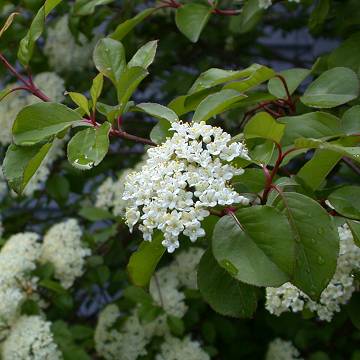

Viburnum prunifolium - (image 1 of 5)
Taxonomy
Family: Caprifoliaceae
Habitat
Moist woods and calcareous springy habitats.
Associates
Distribution
CT west to southern IA, south GA to TX.
Morphology
Shrub or small tree to 8 m. Leaves dull, elliptical, rounded to acute at the tip with a finely serrate margin; petioles wingless or only narrowly winged, glabrous or minutely scurfy. Cyme sessile and 3-4-rayed, 5-10 cm wide. Fruit blue-black, ellipsoid to subglobose, 9-15 mm, calyx tube persistent on the fruit.
Notes
Flowers late April to early June
Wetland indicator: Facultative Upland
The fruit is somewhat sweet and edible. A good shrub for landscaping and quite drought tolerant. Viburnum rufidulum Raf. (Southern Black Haw) is similar but more southern, with winged, densely red-tomentose petioles and shiny leaves.
References
Gleason, Henry A. and A. Cronquist. 1991. Manual of Vascular Plants of
Northeastern United States and Adjacent Canada. Second Ed.
The New York Botanical Garden. Bronx, NY
Swink, F. and G. Wilhelm. 1994. Plants of the Chicago Region.
Indiana Academy of Science. The Morton Arboretum. Lisle, Illinois.
|
Michael Hough © 2005 |